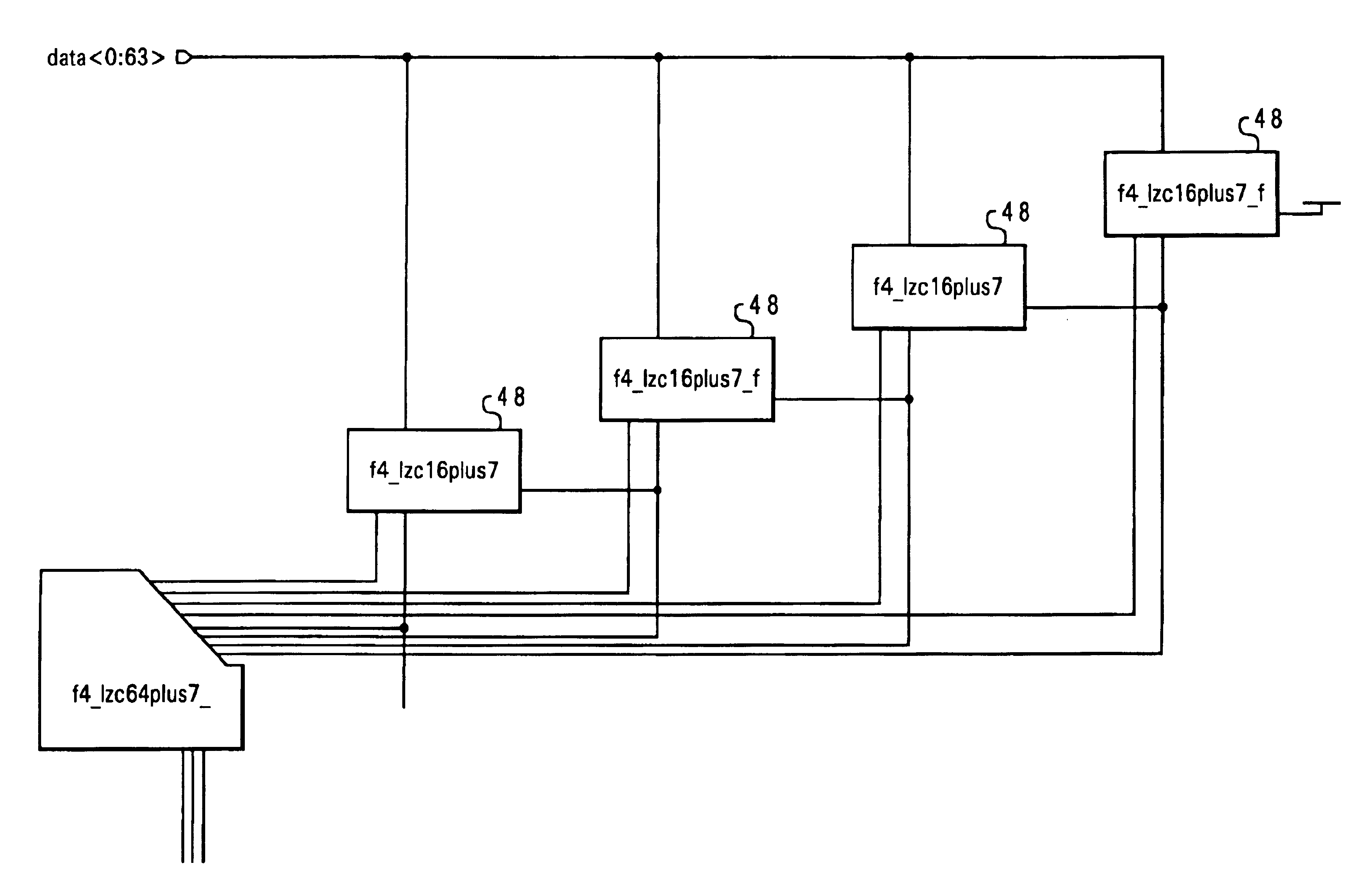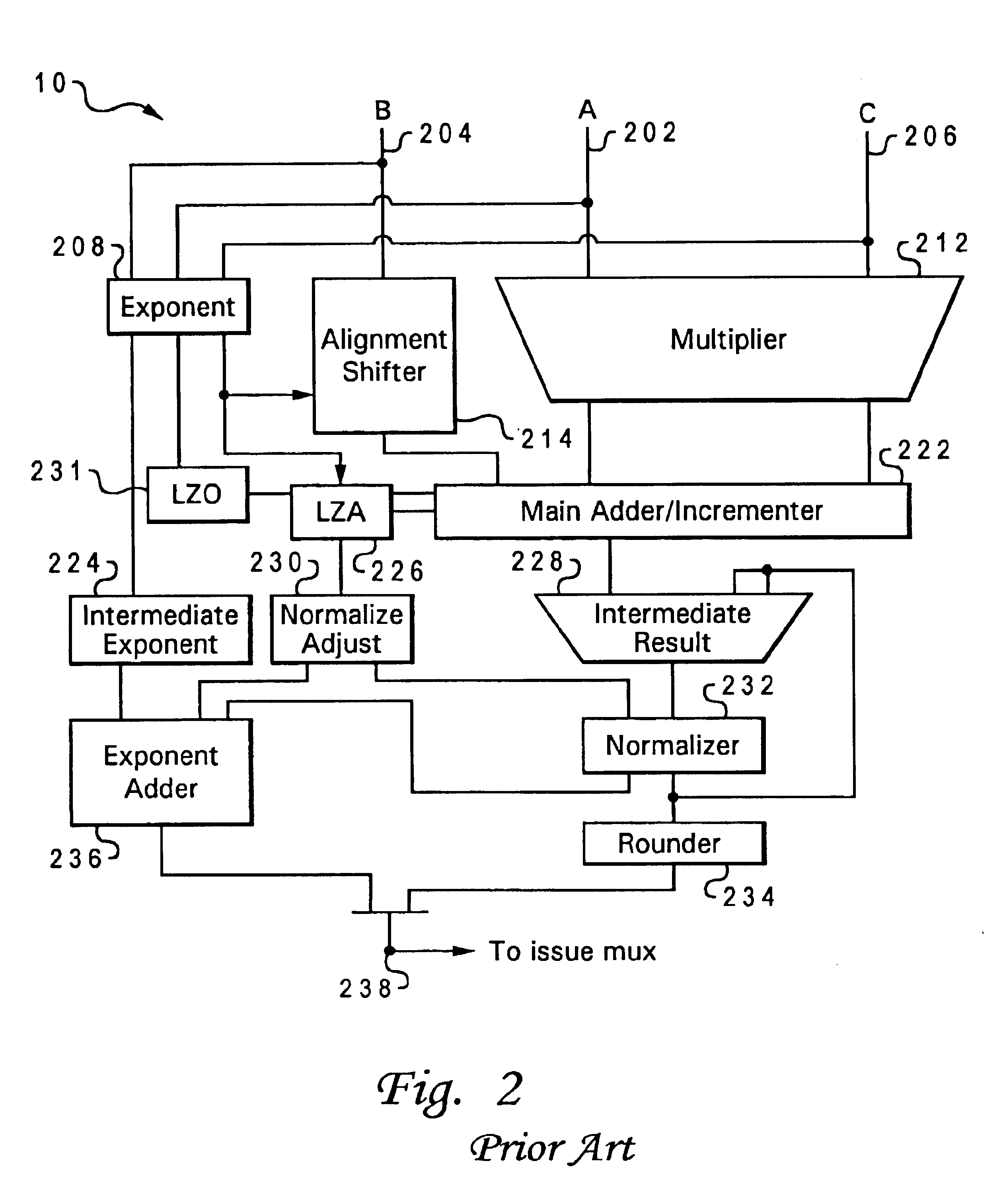Method and apparatus for binary leading zero counting with constant-biased result
a technology of constant bias and counting method, applied in the field of computer systems, can solve the problems of compounding the difficulty of floating-point arithmetic, the function cannot be performed in this fashion, and the function cannot be easily performed in this fashion
- Summary
- Abstract
- Description
- Claims
- Application Information
AI Technical Summary
Problems solved by technology
Method used
Image
Examples
Embodiment Construction
The present invention is directed to a method of counting leading zeros of a binary mantissa, and is carried out in a processing unit of a computer system. The computer processor may include many of the various components shown in FIGS. 1 and 2, but the processor of the present invention includes new hardware components as well, and could further have a novel interconnection architecture for conventional components. Therefore, while the present invention may be understood with reference to FIGS. 1 and 2, this reference should not be construed in a limiting sense.
Also, while the invention can be applied to generating biased leading-zero counts, it can further be used to generate biased leading one counts. As explained further below, a leading one count may be determined by substituting different encoding logic (or by logically inverting the input data field) to achieve essentially the same effect.
Adding a bias to a vector's leading-zero count is equivalent to actually prepending the ...
PUM
 Login to View More
Login to View More Abstract
Description
Claims
Application Information
 Login to View More
Login to View More - R&D
- Intellectual Property
- Life Sciences
- Materials
- Tech Scout
- Unparalleled Data Quality
- Higher Quality Content
- 60% Fewer Hallucinations
Browse by: Latest US Patents, China's latest patents, Technical Efficacy Thesaurus, Application Domain, Technology Topic, Popular Technical Reports.
© 2025 PatSnap. All rights reserved.Legal|Privacy policy|Modern Slavery Act Transparency Statement|Sitemap|About US| Contact US: help@patsnap.com



